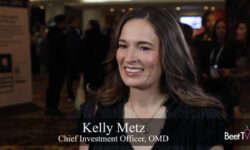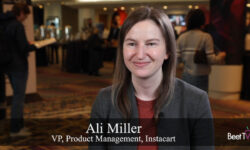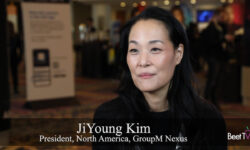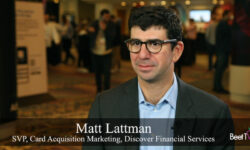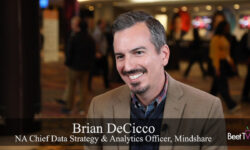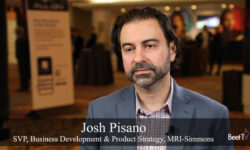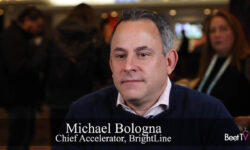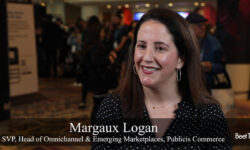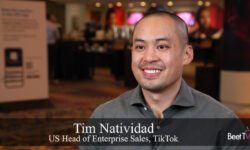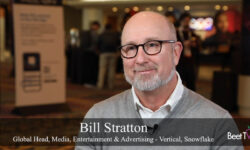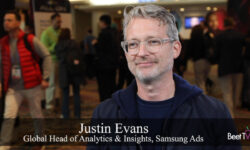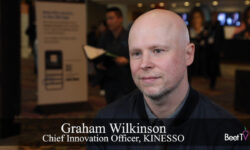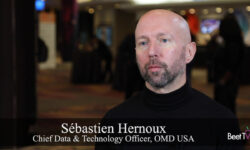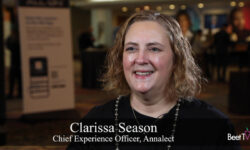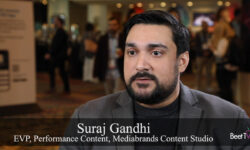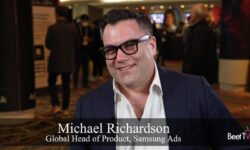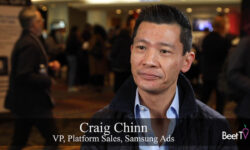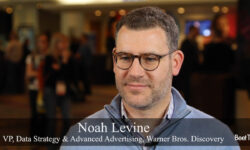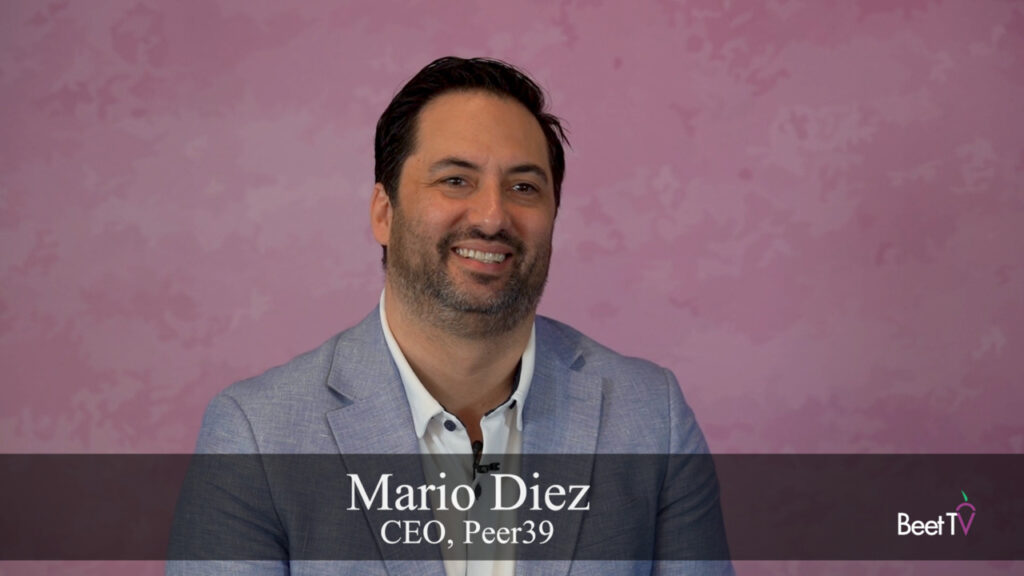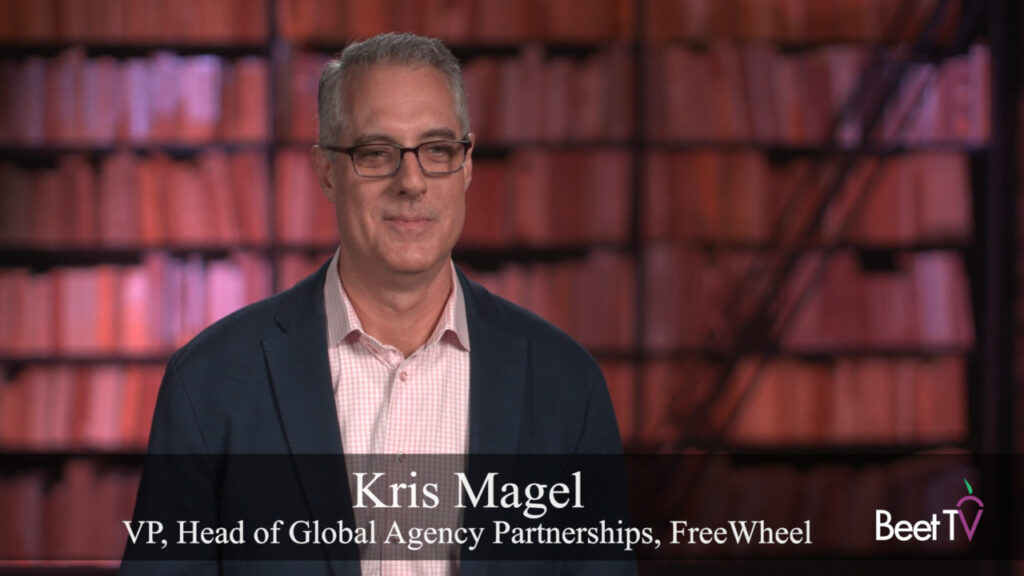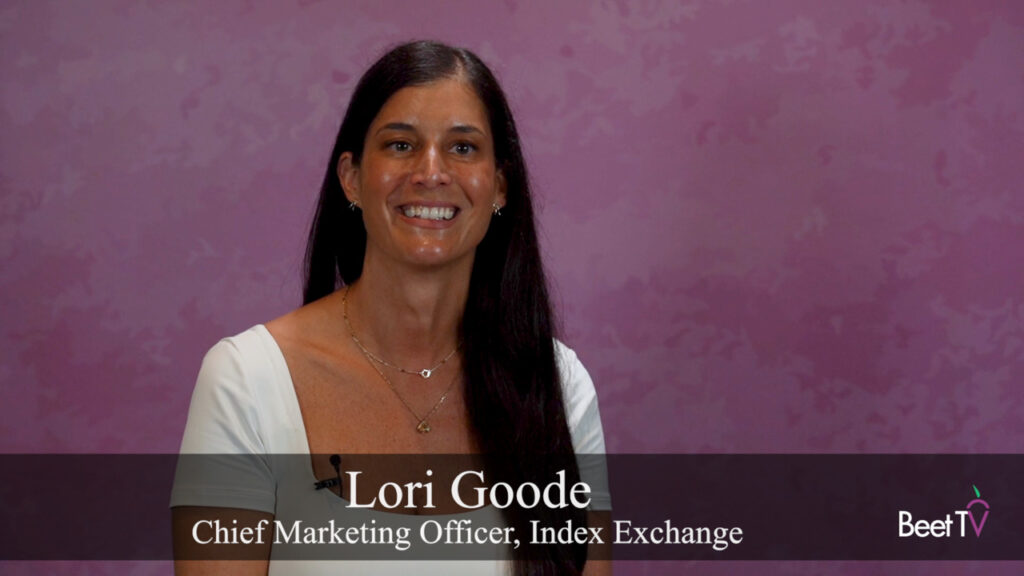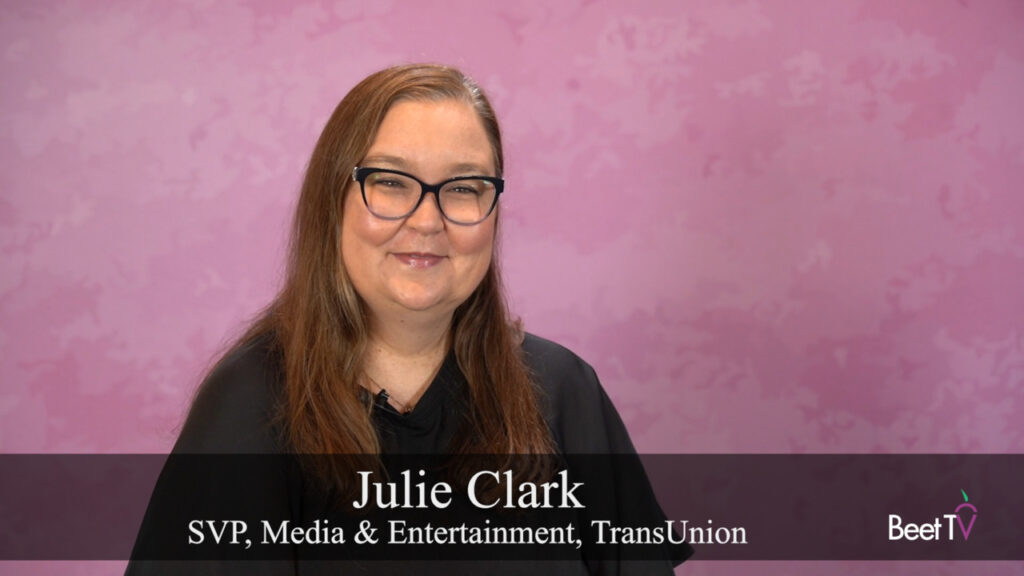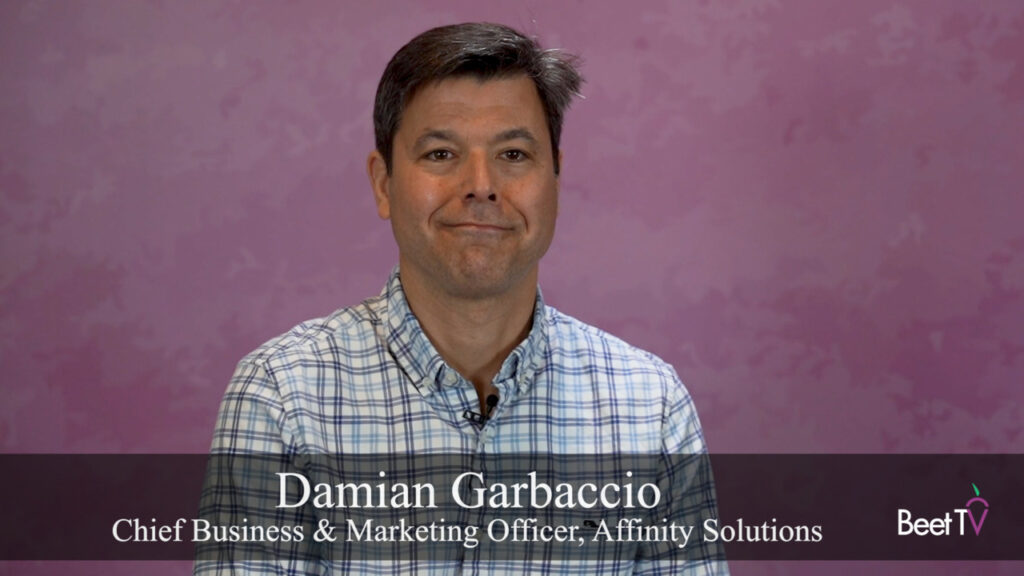LAS VEGAS — As artificial intelligence and generative AI emerge in the media world, how should we think about the pros and cons?
Mark Zagorski, CEO, Double Verify, says the tech can be a boon for correctly classifying content.
And he says the coming election cycle is likely to see a new swathe of low-grade, auto-generated content. But, Zagorski says, ad buyers should be careful how they treat publishers in the new era of AI content.
“AI: An Accelerator of Core Assets”
“It’s not all positive and it’s not all negative,” Zagorski explains. He points out how AI acts as an accelerator for Double Verify’s core asset – the ability to identify advertiser-safe content.
“It’s helping us accelerate our ability to do so by identifying images faster, by identifying challenging content more efficiently and not using as many humans to do so,” he says.
In fact, AI has enabled the firm to speed up its existing processes without the need for a complete rebuild. “[AI] involves taking the same processes that we’ve done so well in the past and the same rules and the same structures, and being able to do them faster,” Zagorski elaborates. The technology takes the tedium out of time-consuming processes, allowing human staff to focus on strategy and policy.
“The Negative Side of AI: Generative Misleading Content”
However, the negative side of AI’s impact on the industry is equally potent.
“We’ve seen AI being used in generative fashion to create more, let’s say, less important content, MFA-type (Made-For-Advertising) content and content that can be somewhat misleading for advertisers to be around,” Zagorski laments.
This misuse of AI presents new challenges for Double Verify, which is committed to maintaining a safe and suitable environment for advertisers.
“Expect More Hate Speech, Misinformation and Disinformation”
As we move into another election year, Zagorski warns of more challenges on the horizon.
“If it’s anything like the previous election cycles that we’ve seen, it’s going to be a challenging one for advertisers,” he says, pointing to the marked increase in hate speech in competitive Senate race markets during the midterm elections.
He believes the competitive presidential race will result in “more hate speech, more misinformation and disinformation”, which advertisers must plan to avoid.
“Brand Safety: A Scalpel, Not A Meat Cleaver”
But the industry has already been through a phase in which ad buyers used brand safety tools were used to blacklist news sites generally, during COVID-19.
Zagorski stresses the importance of a nuanced approach. He believes that avoiding entire categories of content is not the solution.
“We always like to think that we have provided them scalpels to avoid content as opposed to a meat cleaver,” he says.
Advertisers should be looking at tools, strategies, and methodologies to ensure their brands are associated with important content, but not adversarial to their company or brand.
The interview was conducted by Mike Shields, CEO, Shields Strategic Consulting.
You’re watching “AI: Powering an Optimized Advertising Ecosystem,” a Beet.TV Leadership Series at CES 2024, presented by Double Verify. For more videos from this series, please visit this page.






